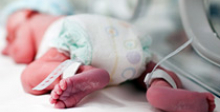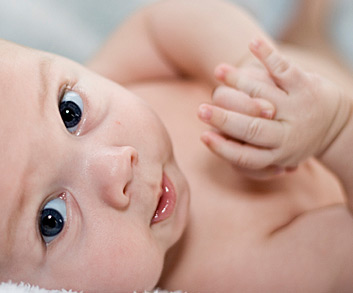Internal mini form
Contact Us Today
A-B-0 and Rh incompatibility happens when a mother’s blood type conflicts with that of her newborn child. Blood type incompatibility can be prevented, learn how.
What is blood type incompatibility? Jaundice?
Blood types are categorized by A, B, and O, and given an Rh factor of positive or negative. A-B-0 and Rh incompatibility happens when a mother’s blood type conflicts with that of her newborn child. It is possible for a mother’s red blood cells to cross into the placenta or fetus during pregnancy. When this occurs, the mother’s blood cells develop antibodies that can attack the newborn’s blood cells and cause jaundice. The risk of this is highest near or during delivery.
A-B-O incompatibility occurs when:
- the mother is type O and the baby is B, A, or AB
- the mother is type A and their baby is B or AB
- the mother is type B and their baby is A or AB
Rh incompatibility occurs when a mother has Rh-negative blood and the baby has Rh-positive blood. The mother’s body will produce an auto-immune response that attacks the fetus or newborn’s blood cells as if they were a bacterial or viral invader. This immune response is fairly slow to develop and is rarely a serious issue in first pregnancies. However, subsequent pregnancies with an Rh incompatibility are a significantly higher risk.
Blood type incompatibility can be prevented with a blood test early in pregnancy. If an Rh incompatibility is found, an Rh-immune globulin treatment is administered about 28 weeks into the pregnancy. If the incompatibility is not detected, the newborn can develop severe jaundice leading to brain damage. While it can have serious consequences, jaundice in newborns is common and treatable; medical attention is necessary at the first sign of yellowish discoloration in the skin or eyes.
Rh and ABO incompatibility in the infant results in jaundice, which is treated through hydration and phototherapy. Biliblankets and other phototherapy equipment help the infant’s body expel bilirubin, the cause of jaundice.
Were you or your child at risk – before, during or after your child’s birth?
Cerebral Palsy risk factors are events, substances or circumstances that increase the chances of a child developing Cerebral Palsy. They can be avoidable, or unavoidable. A risk factor does not ensure a child will develop Cerebral Palsy; it means chances are higher than if that risk factor was not present. Likewise, the absence of risk factors does not ensure that a child will not develop Cerebral Palsy. Have you been exposed to the following risk factors?
- Cerebral Palsy Risk Factors
Types of risk factors:
- Asphyxia and oxygen deprivation
- Blood type incompatibility or jaundice
- Complications of birth
- Infection
- Intrauterine growth restrictions
- Multiple births and infertility drugs
- Parental health and habits
- Placenta complications
- Premature birth
- Traumatic brain damage
Risk factors vs. risk factor causal pathways
A risk factor does not ensure a child will develop Cerebral Palsy; it means chances are higher than if that risk factor was not present. Likewise, the absence of risk factors does not ensure that a child will not develop Cerebral Palsy.
- Risk Factors and Risk Factor Causal Pathways
The Cerebral Palsy Risk Factor Checklist
Any exposure to risk factors prior to conception and during pregnancy should be immediately discussed with a doctor in order to treat and minimize risk. The Cerebral Palsy Risk Factor Checklist helps parents determine if they may have been exposed to risk factors for Cerebral Palsy.
- The Cerebral Palsy Risk Factor Checklist









